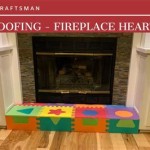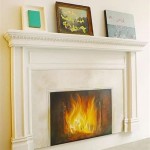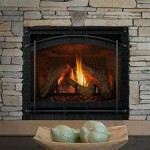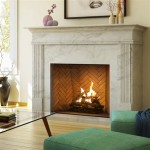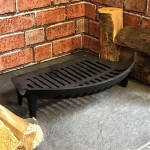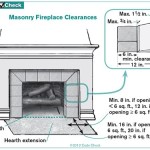How To Install A Wood Burning Stove Into An Existing Fireplace
Installing a wood burning stove into an existing fireplace is a project that combines the allure of traditional heating with the efficiency and control of modern stove technology. This undertaking requires meticulous planning, adherence to safety standards, and a thorough understanding of building codes. While professional installation is always recommended, this article provides a comprehensive overview of the process for informational purposes only. Always consult with qualified professionals and obtain necessary permits before commencing any work.
The primary motivation for installing a wood burning stove within an existing fireplace often stems from a desire to improve heating efficiency. Traditional open fireplaces are notoriously inefficient, with a significant portion of heat escaping up the chimney. A wood burning stove, on the other hand, is designed to radiate heat into the room, providing a more controlled and effective heating solution. Furthermore, modern wood stoves often incorporate advanced combustion technologies that reduce emissions and improve fuel efficiency. The process involves carefully integrating the stove into the existing architecture, ensuring proper venting, and complying with safety regulations.
Key Point 1: Assessment and Preparation
Before initiating the installation process, a comprehensive assessment of the existing fireplace is crucial. This entails a detailed inspection of the chimney, the firebox, and the surrounding hearth area. The goal is to identify any existing structural issues, ensure the chimney is suitable for venting a wood burning stove, and determine the necessary modifications to accommodate the new appliance.
The chimney inspection should be performed by a qualified professional chimney sweep. This inspection will determine if the chimney is clean, structurally sound, and free from obstructions. Crucially, the inspector will assess whether the existing chimney liner is appropriate for use with a wood burning stove. Many older chimneys were built without liners or with liners that are not compatible with the higher temperatures produced by wood stoves. In such cases, a new, appropriately sized stainless steel liner will need to be installed.
The firebox needs to be measured to ensure the chosen wood burning stove will fit comfortably. Consider the dimensions of the stove, allowing for adequate clearances from combustible materials. Building codes typically specify minimum clearances for the stove body, stovepipe, and hearth extension. These clearances are essential for preventing fires.
The hearth area must also be evaluated. Many existing hearths are not large enough to meet the clearance requirements for wood burning stoves. The hearth extension, which is the non-combustible material extending in front of and to the sides of the stove, must be of sufficient size to protect the flooring from sparks and embers. If the existing hearth is inadequate, it will need to be extended using materials such as brick, stone, or tile.
Once the assessment is complete, the necessary permits must be obtained from the local building authority. Permit requirements vary depending on location, but typically involve submitting plans for the installation and undergoing inspections to ensure compliance with building codes and safety regulations. Neglecting to obtain the necessary permits can result in fines and the potential for having to remove the stove.
Prior to commencing the installation, gather all necessary materials and tools. This includes the wood burning stove itself, the appropriate length of stovepipe, connectors, chimney liner (if required), insulation, cement, fire-resistant sealant, and tools such as a drill, level, measuring tape, and safety glasses.
Key Point 2: Installation Procedure
The installation process involves several key steps, each requiring careful attention to detail. The specifics may vary slightly depending on the model of stove and the characteristics of the existing fireplace, but the general principles remain the same.
The first step is typically the installation of the chimney liner, if required. This involves carefully lowering the flexible stainless steel liner down the chimney flue. Connect the liner to the stove adapter at the bottom of the chimney, ensuring a secure and airtight connection. The top of the liner should be capped with a chimney cap to prevent rain and debris from entering the system. This process often requires specialized tools and expertise, and it is highly recommended to engage a professional for this task.
Next, prepare the firebox for the stove. This may involve removing the existing damper and other obstructions. Clean the firebox thoroughly to remove any soot or debris. If necessary, repair any cracks or damage to the firebox walls using refractory cement.
Position the wood burning stove inside the firebox, ensuring it is centered and level. Connect the stovepipe to the stove collar and then to the chimney liner adapter. Use appropriate connectors and clamps to ensure a secure and airtight seal. The stovepipe should slope upwards from the stove to the chimney at a minimum angle of 1/4 inch per foot.
Once the stove is positioned and the stovepipe is connected, install any necessary insulation around the stove to maintain required clearances from combustible materials. This insulation can be in the form of heat shields or specialized insulation boards. Consult the stove manufacturer's instructions and local building codes for specific requirements.
Seal any gaps around the stovepipe and chimney liner adapter with fire-resistant sealant. This will help prevent air leaks and ensure that all combustion gases are vented properly through the chimney.
Key Point 3: Testing and Safety Checks
After the installation is complete, thorough testing and safety checks are essential. This ensures that the stove is functioning correctly and that there are no safety hazards.
Begin by performing a smoke test. Light a small fire inside the stove and observe the chimney to ensure that smoke is exiting properly. Check for any smoke leaks around the stovepipe connections or the chimney liner adapter. If smoke is leaking into the room, identify and seal the leak immediately.
Monitor the stove and the surrounding area during the first few fires. Pay close attention to the temperature of nearby combustible materials. Ensure that the clearances are adequate and that there is no excessive heat buildup. Use a surface thermometer to monitor the temperature of the stovepipe and the surrounding walls.
Install carbon monoxide detectors in the vicinity of the stove. Carbon monoxide is a colorless and odorless gas that can be produced by incomplete combustion. Functioning carbon monoxide detectors are essential for detecting leaks and preventing poisoning.
Have the installation inspected by a qualified professional or the local building authority. This inspection will verify that the installation meets all applicable codes and safety standards. Addressing any deficiencies identified during the inspection is crucial for safe and efficient operation.
Educate all members of the household on the safe operation of the wood burning stove. This includes proper loading techniques, air control settings, and maintenance procedures. Emphasize the importance of never leaving the stove unattended while it is burning and of keeping flammable materials away from the stove.
Regular maintenance is crucial for the continued safe and efficient operation of the wood burning stove. This includes cleaning the chimney regularly to remove creosote buildup. Creosote is a highly flammable substance that can accumulate in the chimney and cause chimney fires. The chimney should be inspected and cleaned by a qualified professional at least once a year, or more frequently if necessary. Additionally, inspect the stovepipe and stove components regularly for any signs of wear or damage. Replace worn or damaged parts promptly.
Choosing the right wood is also critical. Use only seasoned, dry wood. Wet or green wood produces more smoke and creosote, increasing the risk of chimney fires and reducing heating efficiency. Store wood in a dry, well-ventilated area to ensure it dries properly. Hardwoods like oak and maple are generally preferred for wood burning stoves because they burn longer and produce more heat than softwoods like pine.
Proper operation of the air controls is also important. Learn how to adjust the air controls to achieve efficient combustion and minimize smoke production. Avoid overfiring the stove, as this can damage the stove and increase the risk of chimney fires. Monitor the temperature of the stovepipe and adjust the air controls accordingly.
Dispose of ashes properly. Allow ashes to cool completely before disposing of them in a metal container with a tight-fitting lid. Store the container away from combustible materials until the ashes can be safely disposed of. Never dispose of ashes in a plastic container or directly onto the ground.
By carefully following these instructions and adhering to all applicable codes and safety standards, it is possible to safely and effectively install a wood burning stove into an existing fireplace. Remember that professional installation is always recommended, and it is crucial to prioritize safety at every stage of the process.

Chimney Installations

Victorian Fireplace Hobbit Installation Small Stoves

How To Install A Fireplace Insert Ask This Old House

How To Install A Wood Burning Stove Into An Existing Chimney Www Pomoly Com

How To Install A Fireplace Insert Ask This Old House

Converting A Fireplace To Wood Burning Stove Chesneys

Add A Wood Stove To An Existing Fireplace Flue Doityourself Com

Diy Installation Of Our Indoor Wood Burning Stove A Ive Household

Wood Buring Stove In An Existing Fire Place Installers

How To Install A Wood Stove Chimney Through Wall


